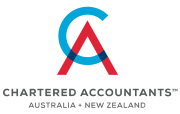 To qualify for small business CGT concessions, an asset must meet the conditions of the Active Asset Test to apply. An asset is considered active when you own it and it is used or held ready for use in relation to a business. You can also have an intangible active asset if it is inherently connected with a business you carry on.
To qualify for small business CGT concessions, an asset must meet the conditions of the Active Asset Test to apply. An asset is considered active when you own it and it is used or held ready for use in relation to a business. You can also have an intangible active asset if it is inherently connected with a business you carry on.
An active asset of yours has been held for a certain amount of time, based on how long you have owned the asset and the test period to meet the requirements of the Active Asset Test. The test period begins when you acquired the asset, and ends at the earlier of
- the CGT event, or;
- when the business ceased, if the business in question ceased in the 12 months before the CGT event.
Assets owned for over 15 years need to have been held for at least 7.5 years within the test period and assets owned for 15 years or less need to have been held for at least half of the test period to satisfy requirements.
When the assets are shares or trusts, passing this basic active asset test is not enough to qualify for CGT concessions. In addition, the asset will need to pass a further test, called the 90% test, to determine whether it is to be counted as an active asset or not. The test is satisfied if CGT concession stakeholders in the company or trust in which the shares or interest are held have a total small business percentage in the entity claiming the concession of at least 90%.
The periods in which the asset is active does not have to be continuous, however, they must total the minimum periods specified. An asset does not need to be active just before the CGT event.








